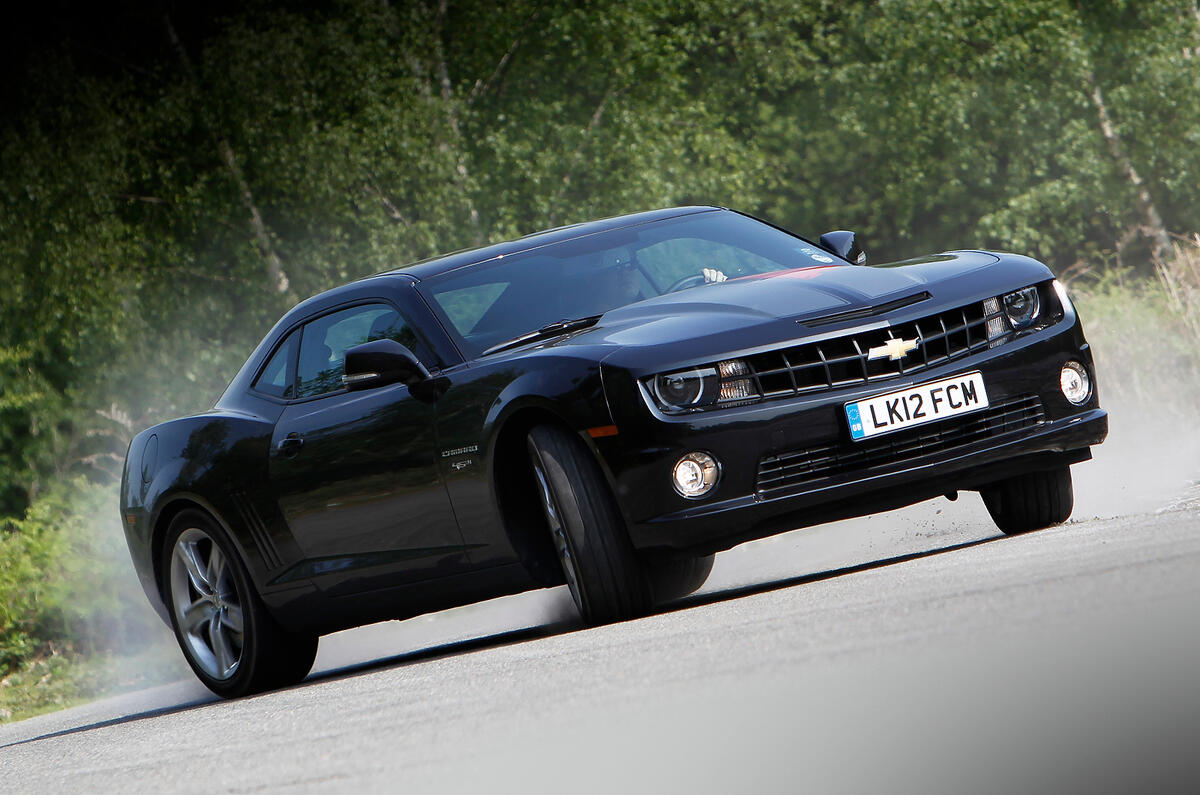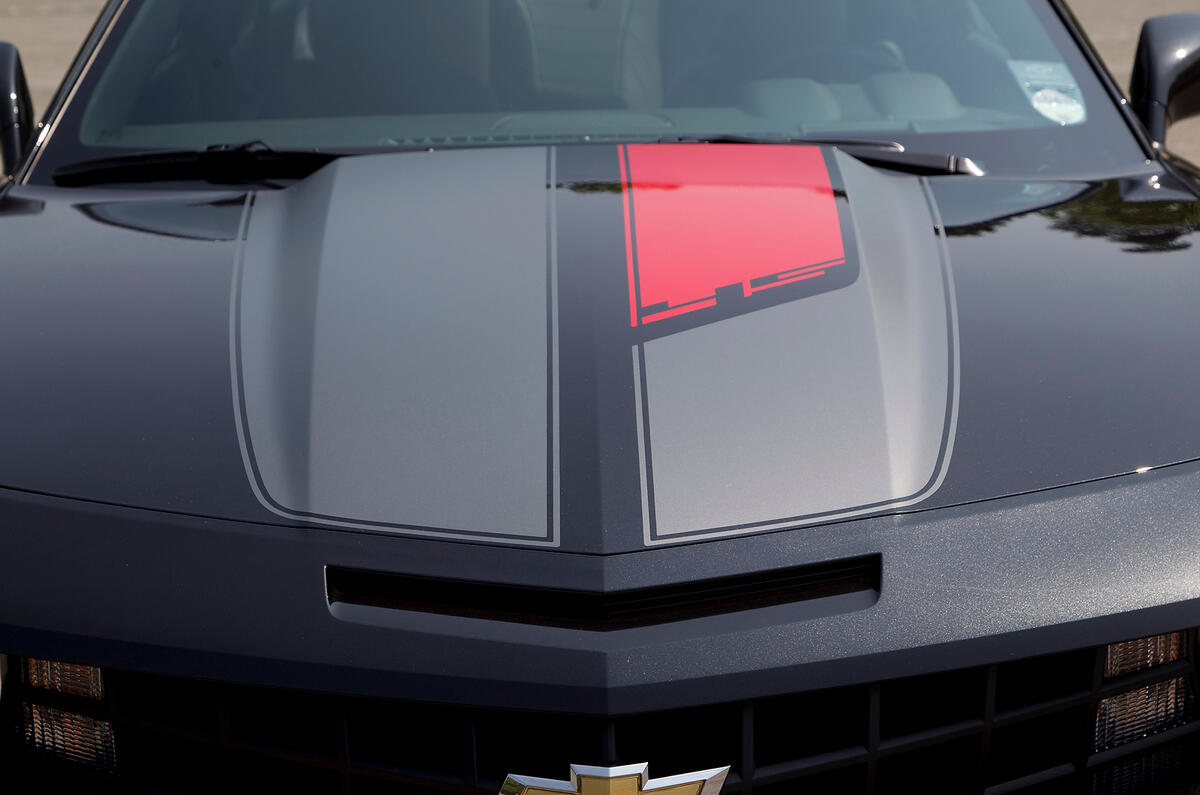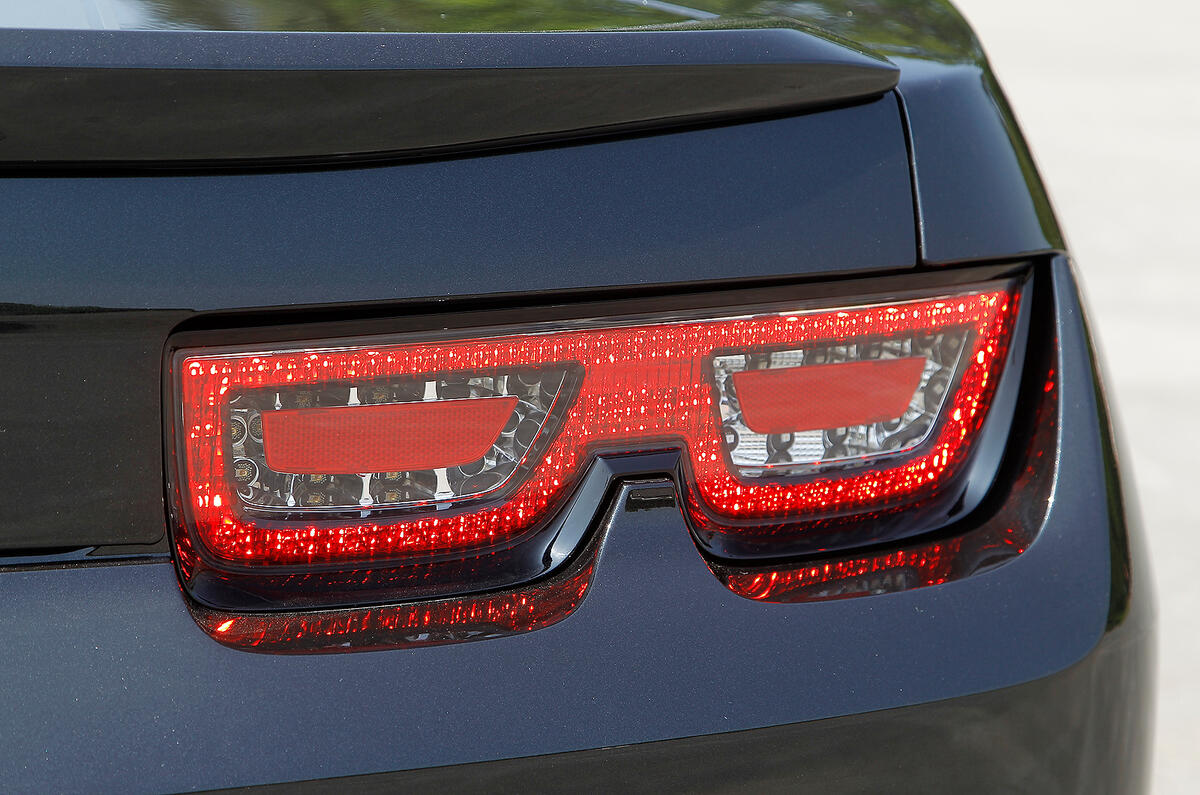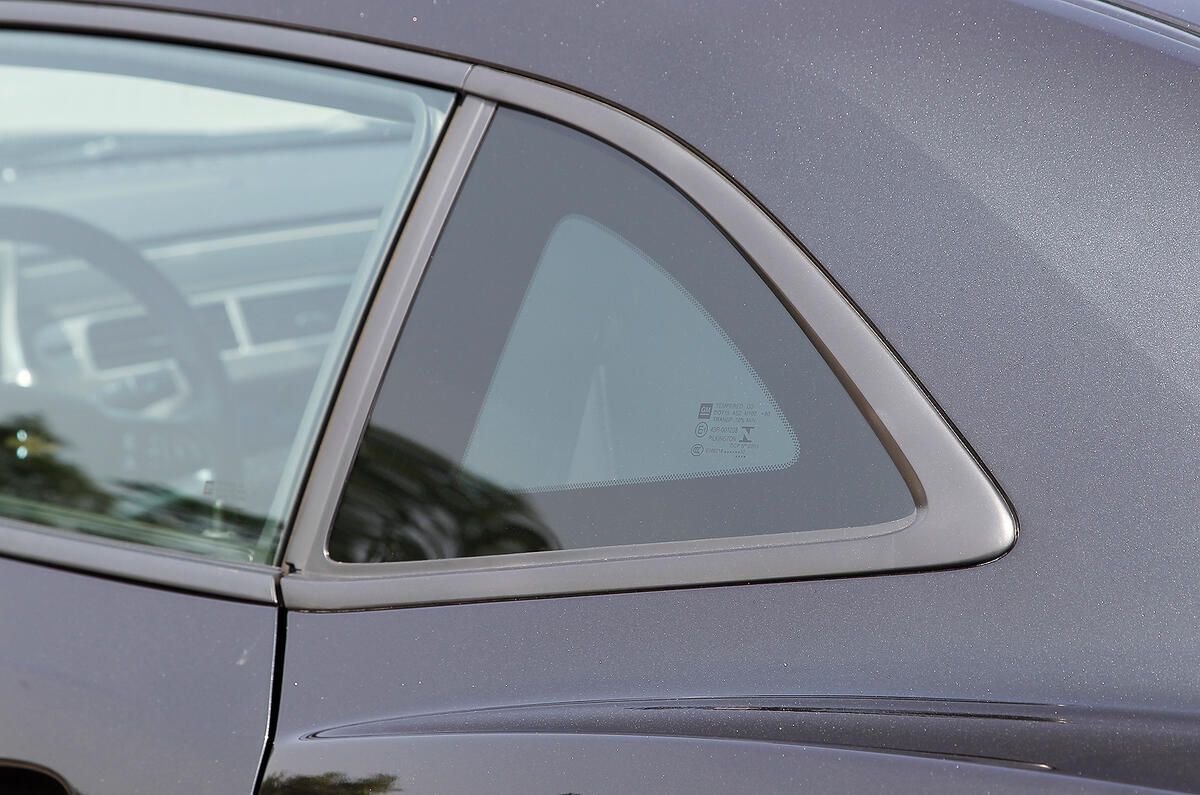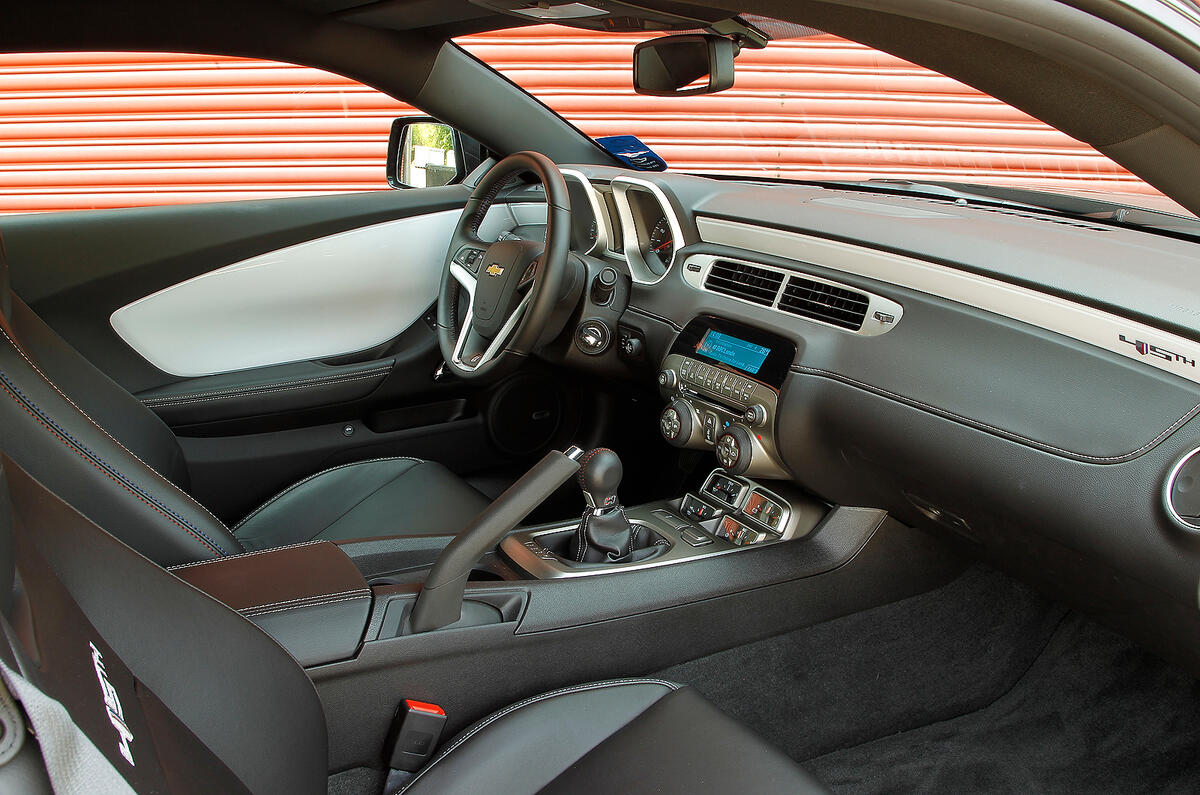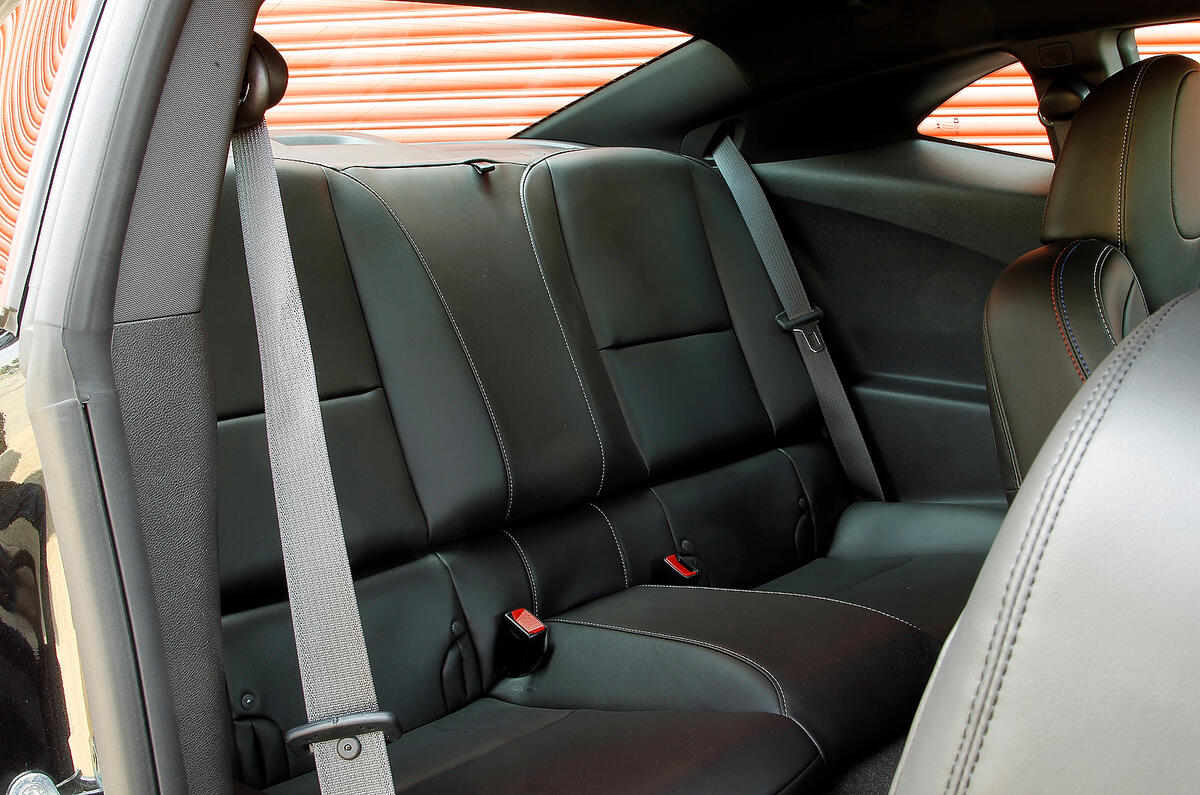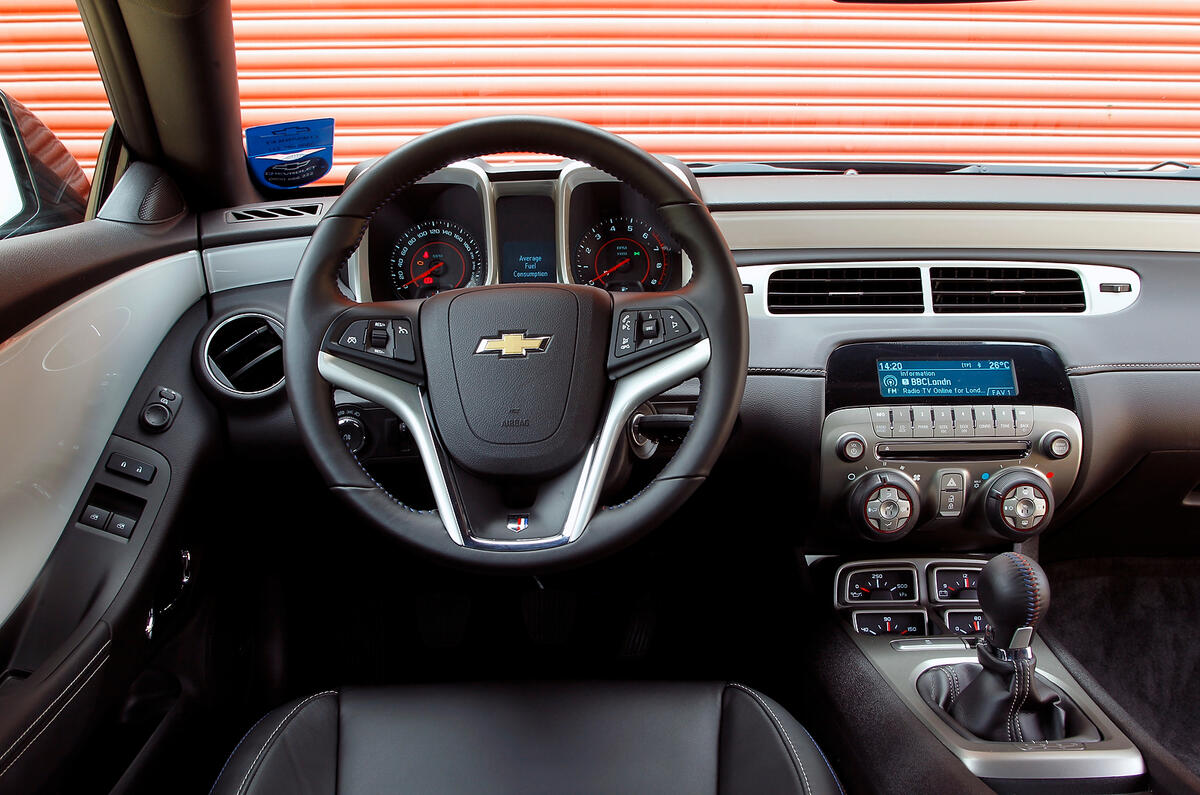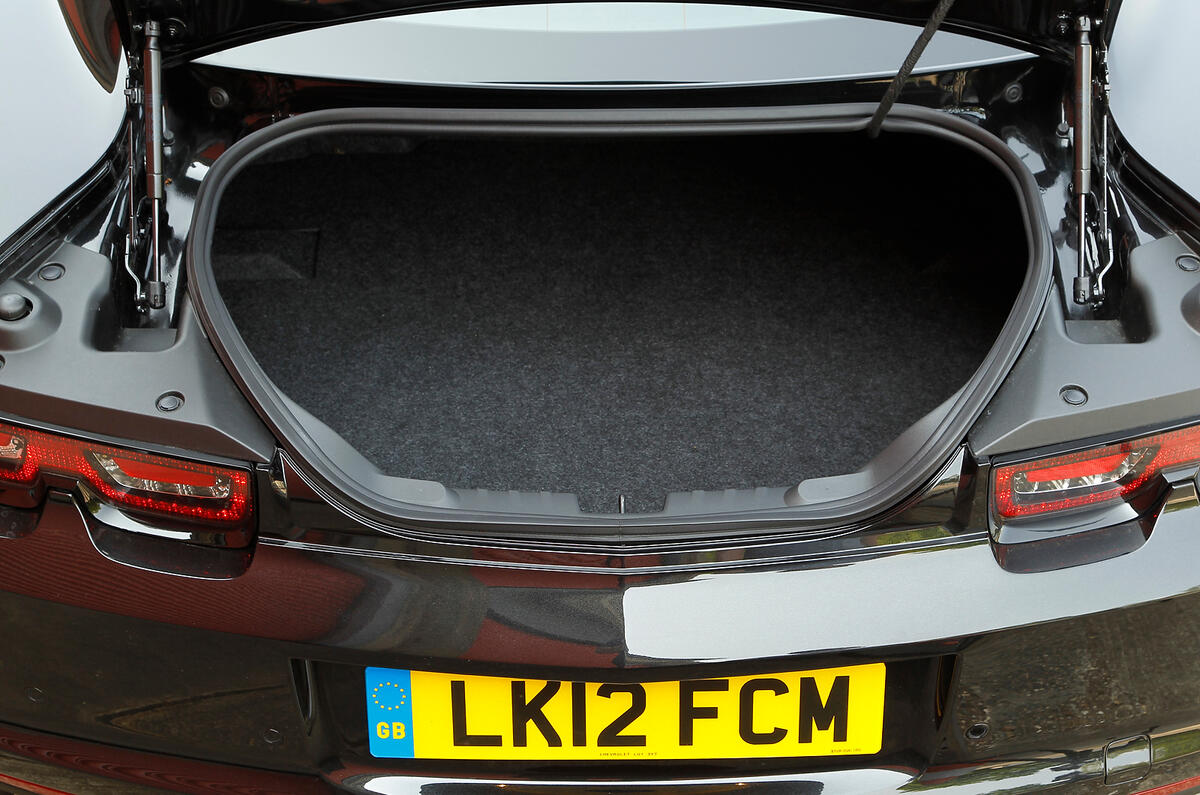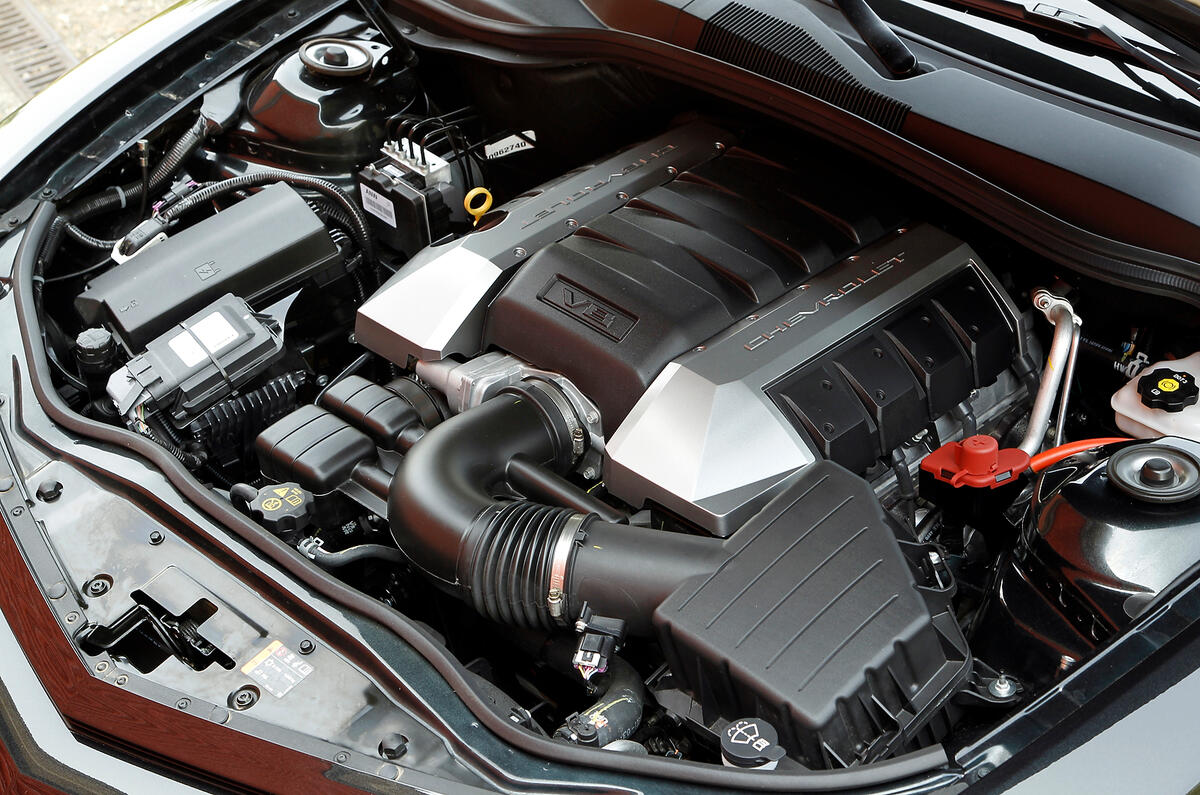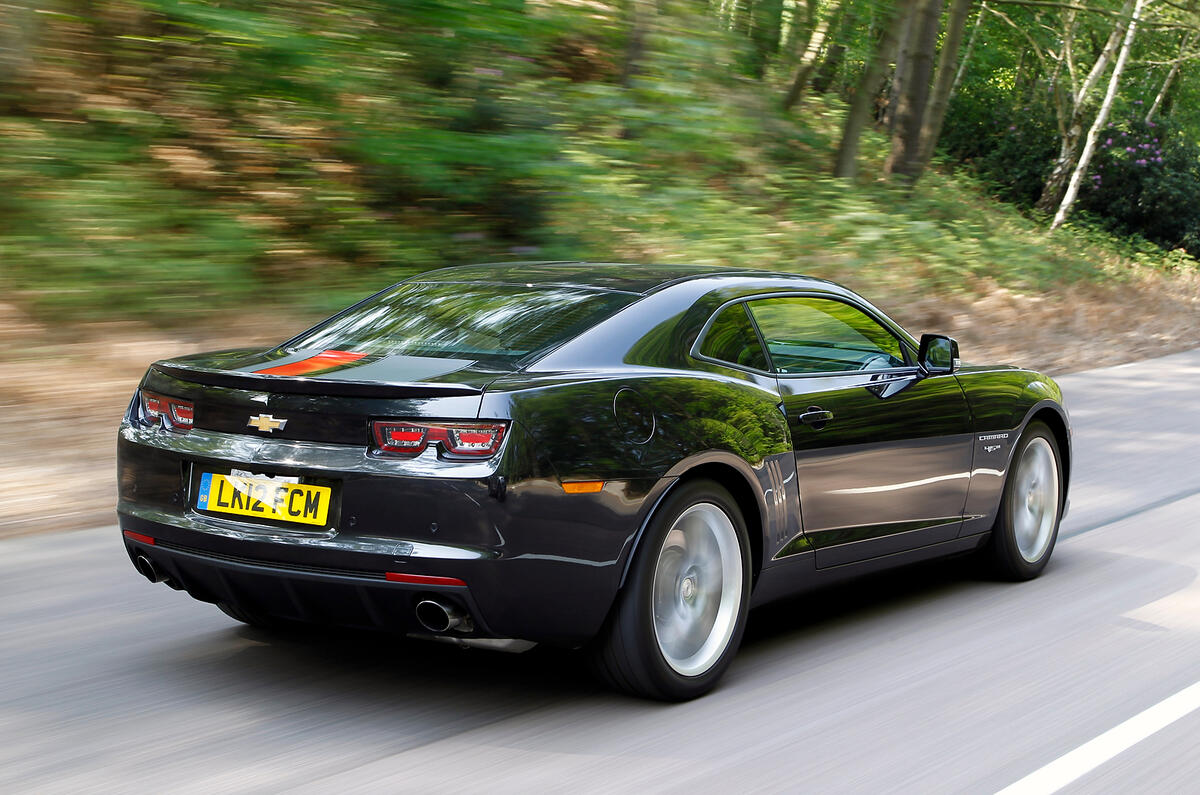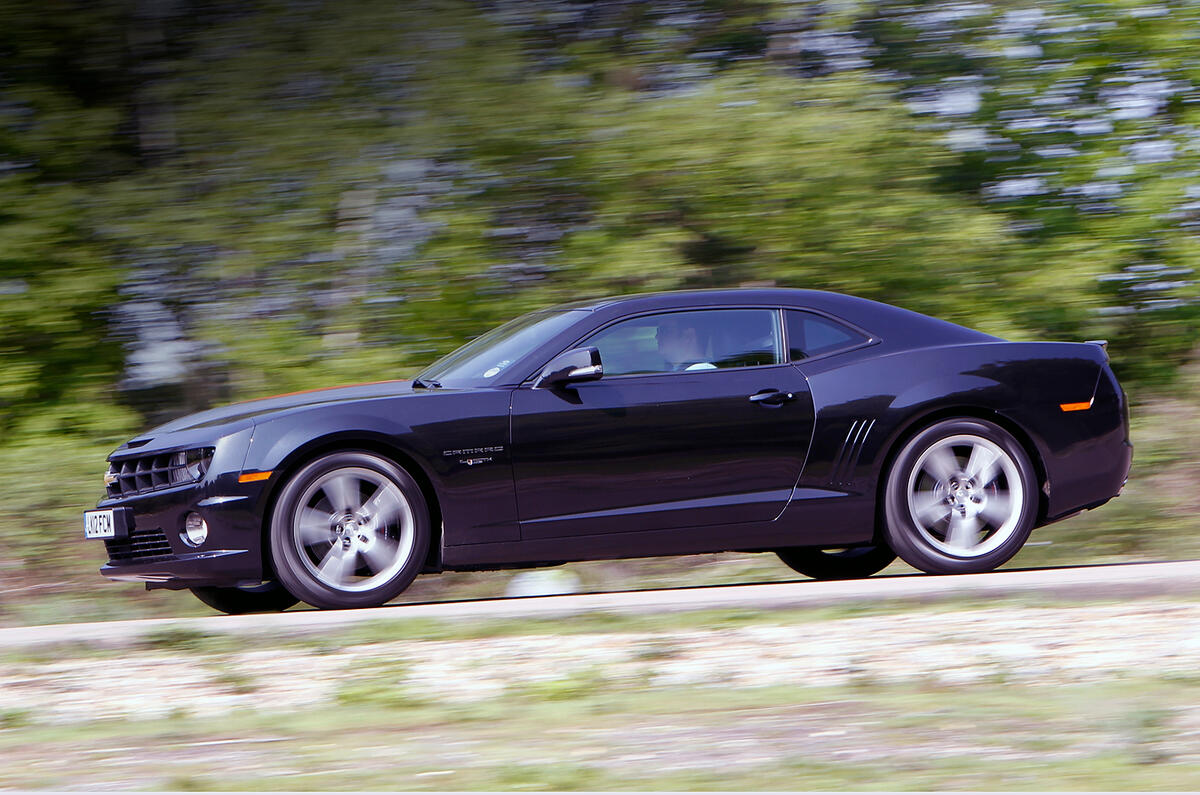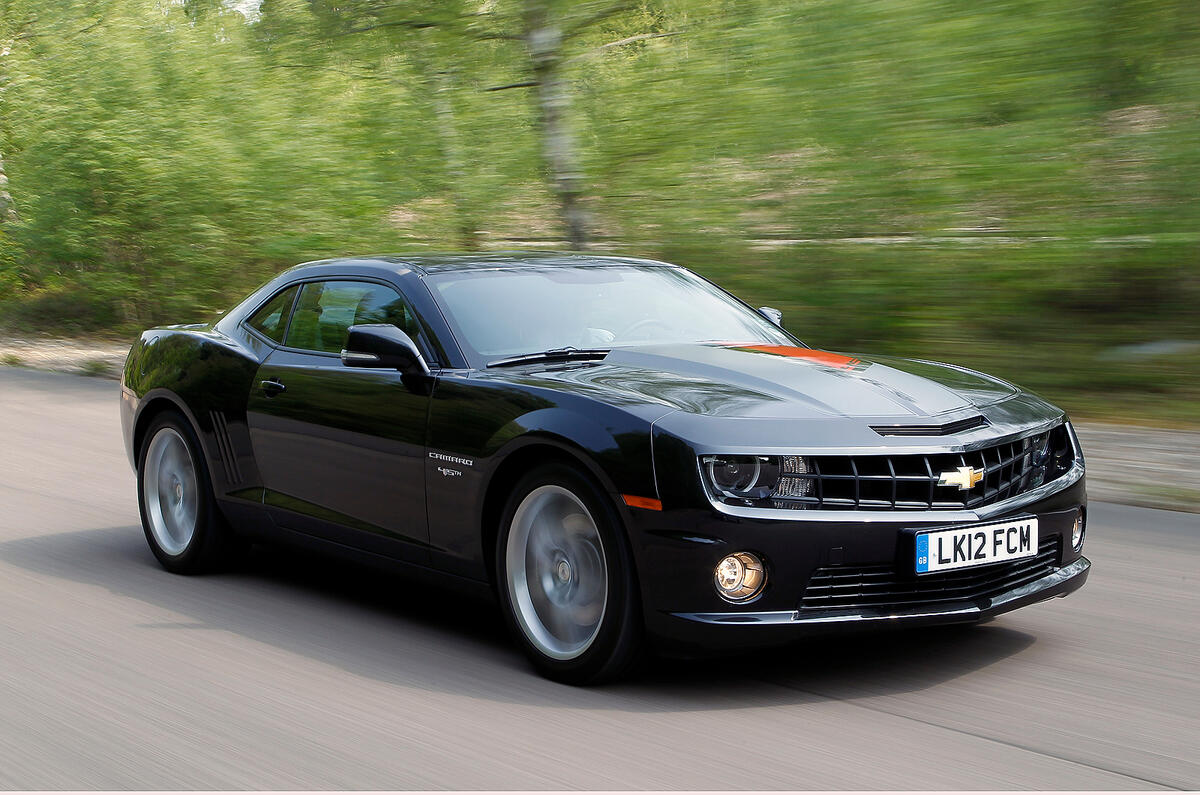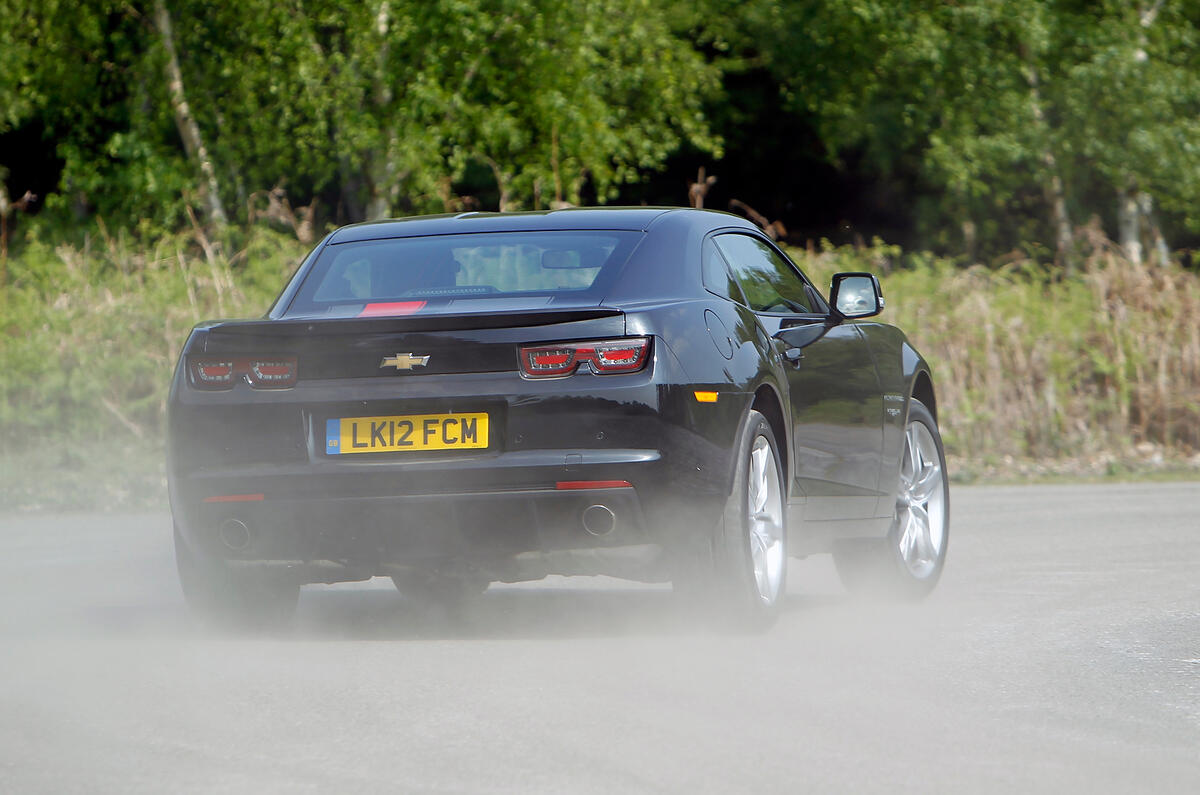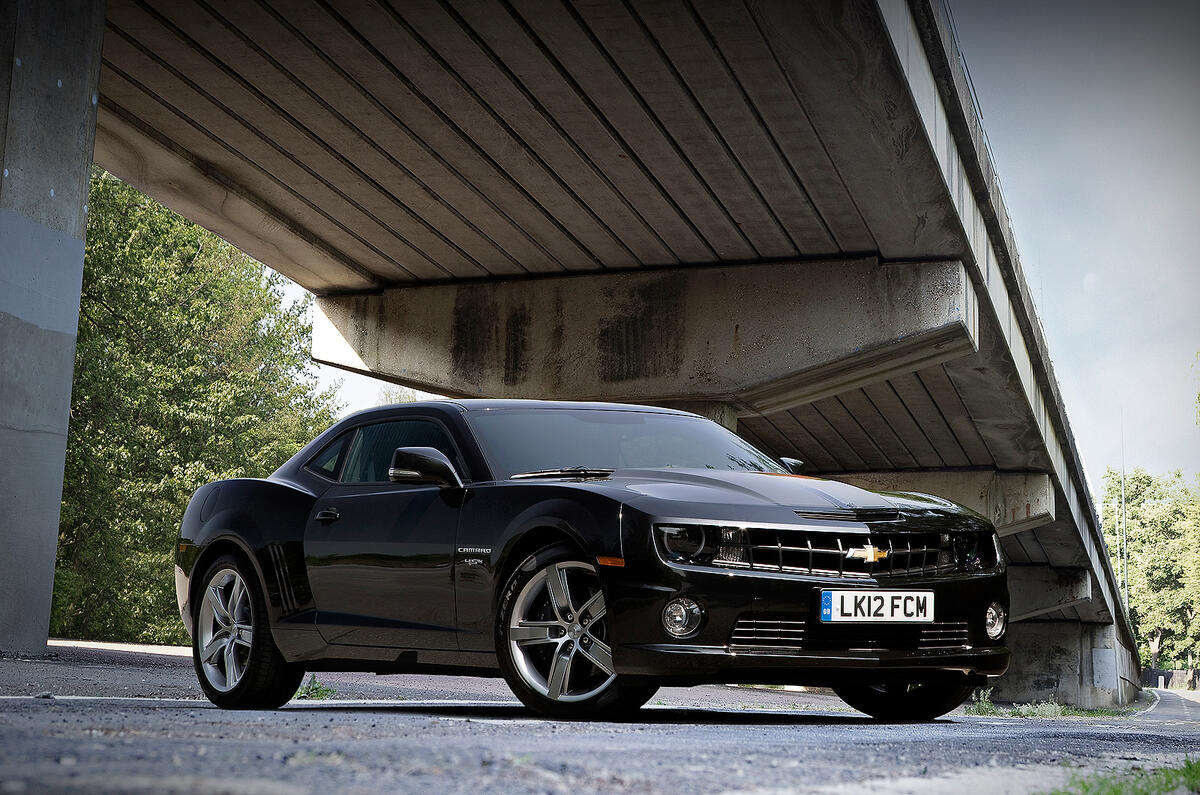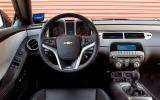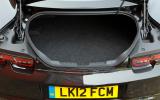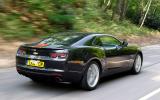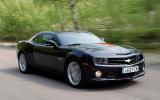So why subject a Chevrolet Camaro to a full road test, and why now? After all, we first drove this iconic American muscle car in the UK two years ago, almost to the week, and in similar mechanical specification.
Then, however, it was available only as a grey import, whereas now the Camaro is officially offered for sale directly through Chevrolet’s resurgent dealer network. Priced at £35,025, it looks conspicuously good value, too.
Unlike other modern Chevrolets, there is nothing ‘designed for Europe’ about the Camaro. It is a brawny muscle car in the truest sense: a two-door coupé in left-hand drive only and equipped with a 6.2-litre V8 engine.
We’re not road testing this car in the belief that it’s going to sell in large numbers in the UK. Ultimately, it is the mechanical spec that gives us the most compelling reasons to assess it. That engine, a six-speed manual gearbox, rear-wheel drive and a limited-slip differential sound like an absolute giggle, giving all the reasons we, or you, should need to lavish attention on it. We’re testing it in its standard guise, apart from optional 45th anniversary badging.



